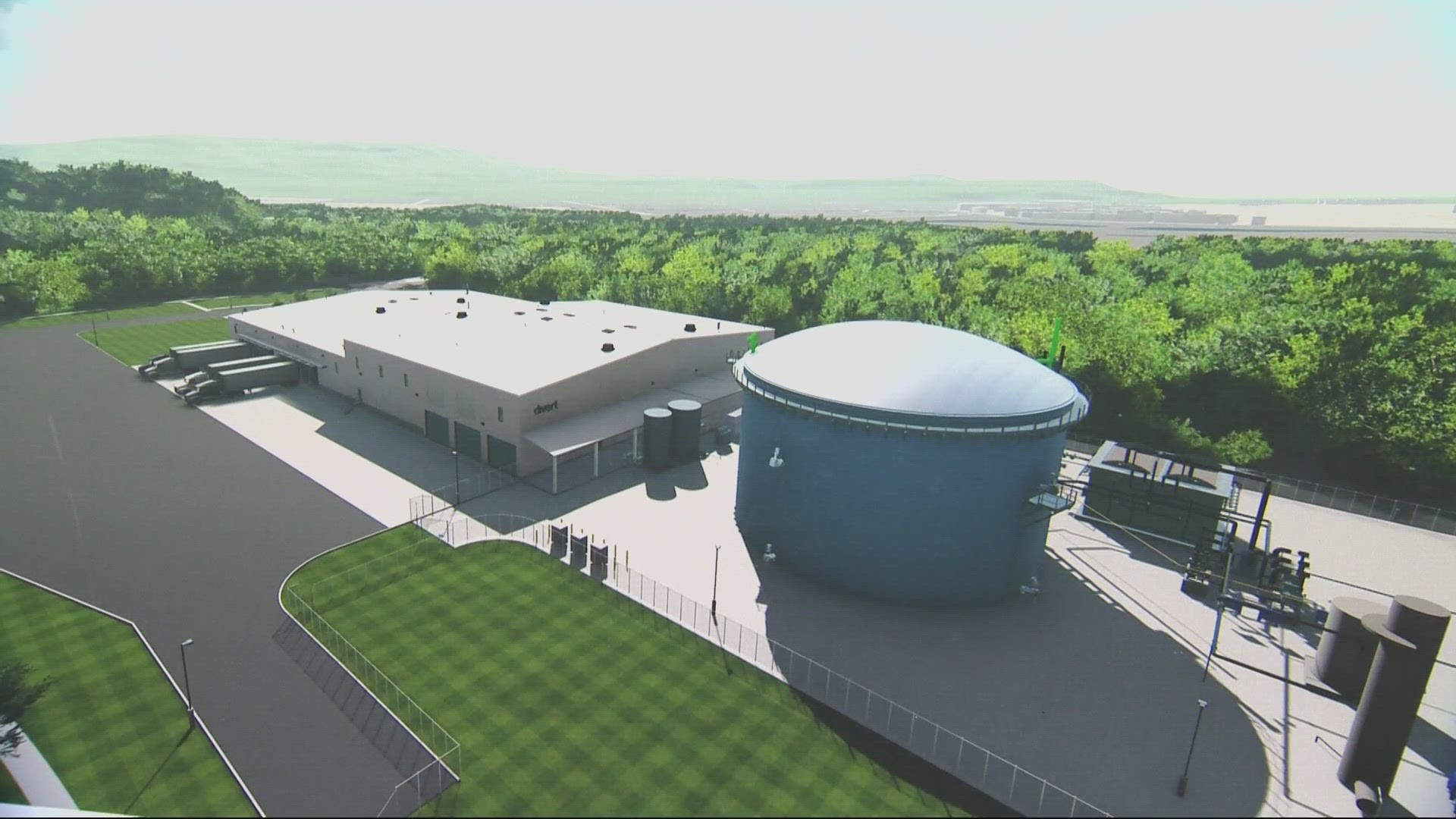LONGVIEW, Wash. —
It was all smiles and applause in Longview, Washington on Thursday as dozens of state and local officials joined company leaders to break ground on a new food waste processing facility.
The facility, which will be built and run by a company called Divert, will encompass 66,000 square feet of warehouse space in the city’s Mint Farm Industrial Park and will process up to 100,000 tons of food waste per year.
But Chris Thomas, vice president of public affairs with Divert, said there’s a key factor that sets his company apart from others who deal in wasted food. While many are focused on keeping food waste out of landfills, Divert seeks to keep food from ever being wasted in the first place.
Sending food waste to a processor “should be the last step in the process,” he said. “We should be focusing first on prevention.”
To do that, Thomas said the company will work with its customers to collect data on what kind of food is being sent to Divert. Over time, they’ll be able to detect trends and provide their customers with ways to cut down on wasted food.
“We're using that insight to help inform them on what they could have, should have, would have done better. What they will do better next time,” he said. “We recognize that 30 to 40% of all food is wasted and we need to treat that food as the valuable resource it is.”
Thomas also said lots of food is thrown away when it doesn’t meet the standards of grocery stores, hotels and convention organizers. That doesn’t mean the food is always waste, though, and Divert will work to identify food that is still good and send it along to local food banks.
But completely eliminating food waste isn’t possible, at least in the short term.
Worldwide, the U.N. estimates that as much as a billion tons of food goes to waste every year. In Oregon and Washington, more than 3.5 million tons of food waste is generated every year.
When that food decomposes in a landfill, it produces methane, a potent greenhouse gas that contributes to climate change. At the new facility, that methane will be harnessed through a process called anaerobic digestion.
“We take that wasted food and put it through equipment that we have on site that de-packages the material then removes all the plastics and contaminants,” he said.
From there, the waste is processed into a liquid slurry before it is loaded into large tanks.
“What that does is it takes the material and over the course of a couple of weeks, it creates a biogas,” Thomas said. “We purify that biogas and clean out the contaminants and once we do that, it's got the exact same specifications as utility-scale natural gas.”
Natural gas, mostly made up of methane, still comes with some concerns around public health and can contribute to climate change if it leaks, but the anaerobic digestion process eliminates the health concerns that come with the methane extraction process, namely fracking.
“It's renewable because it's coming from the food that we waste and would have gone into the landfill and would have created harmful methane in the atmosphere,” Thomas said.
The facility will also help Washington comply with House Bill 1799, a law passed in 2022 known as the Organics Management Law. It requires organic material be diverted from landfills as the state works toward a goal of cutting organic material in landfills by 75% by 2030, compared to 2015 levels.
But Thomas said that even in states that don’t have organic materials disposal laws, their customers are still seeing benefits.
“They say, ‘It wasn't that hard to choose this service. In some cases, it's cheaper than sending it out to a landfill anyway. And we're also making better decisions that make us run our business better,’” he said.
Construction is already underway and Thomas said the facility should be fully operational by the end of 2024.

